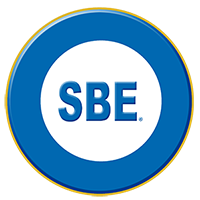The FCC EAS Test Reporting System (ETRS) is up and running. The system is for EAS participants to file identifying information, day of test data, and post-test data related to a nationwide test. The ETRS provides several new features that ease the data-entry burden on EAS participants, encourage timely filings, and minimize input errors. The ETRS also offers new data fields that are responsive to stakeholder comments.
The FCC will use this system for the September National EAS Test and future EAS regional and national tests. There are multiple steps involved in the reporting process. The first step is to complete Form One, which must be done Aug. 26, 2016. To complete the form, participants must register on the ETRS site using the station’s FRN number and a password. Once registered, the FCC will send ETRS account credentials and a link to the ETRS login page.
Adrienne Abbott, SBE member and Nevada EAS chair, compiled some details about the system. Every station will need to complete a Form One. Station groups have the option of designating a coordinator to handle the filings. The coordinator will have the ability to batch file the forms. The form requires call letters as they appear on the license, the facility number for each station and the name of the station’s legal owner. As information is entered, some information will automatically populate the form from the FCC’s CDBS. It is advised to verify the CDBS information is correct.
The transmitter coordinates will not self-populate and must be entered directly. Use decimal form and NAD 83. Licenses are issued with NAD 27, so those numbers cannot be used. The FCC provides a conversion tool, and some consulting engineers offer the station info. If a tower is registered, the coordinates on the registration are in NAD 83. A Google map should appear if the coordinates are close. Check the map for your exact tower location. It should be within one second of the location on your license. If not, correct the location on the license.
The form will ask for the station’s monitoring assignments, but there is no need to include the NWS NOAA Weather Radio frequency. Enter the broadcast stations. The form will also ask for the brand of EAS equipment being used and the firmware/software version. Check the manufacturer’s website to make sure you have the latest update before you enter that information.
After the test, complete Form Two with the initial results of how the test was received and rebroadcast. The FCC wants that information as soon as possible after the test. Form Three allows more time to add any details or other information about the test.
In the FCC announcement about the ETRS, there is mention of a new EAS Handbook. Read the complete FCC public notice.

